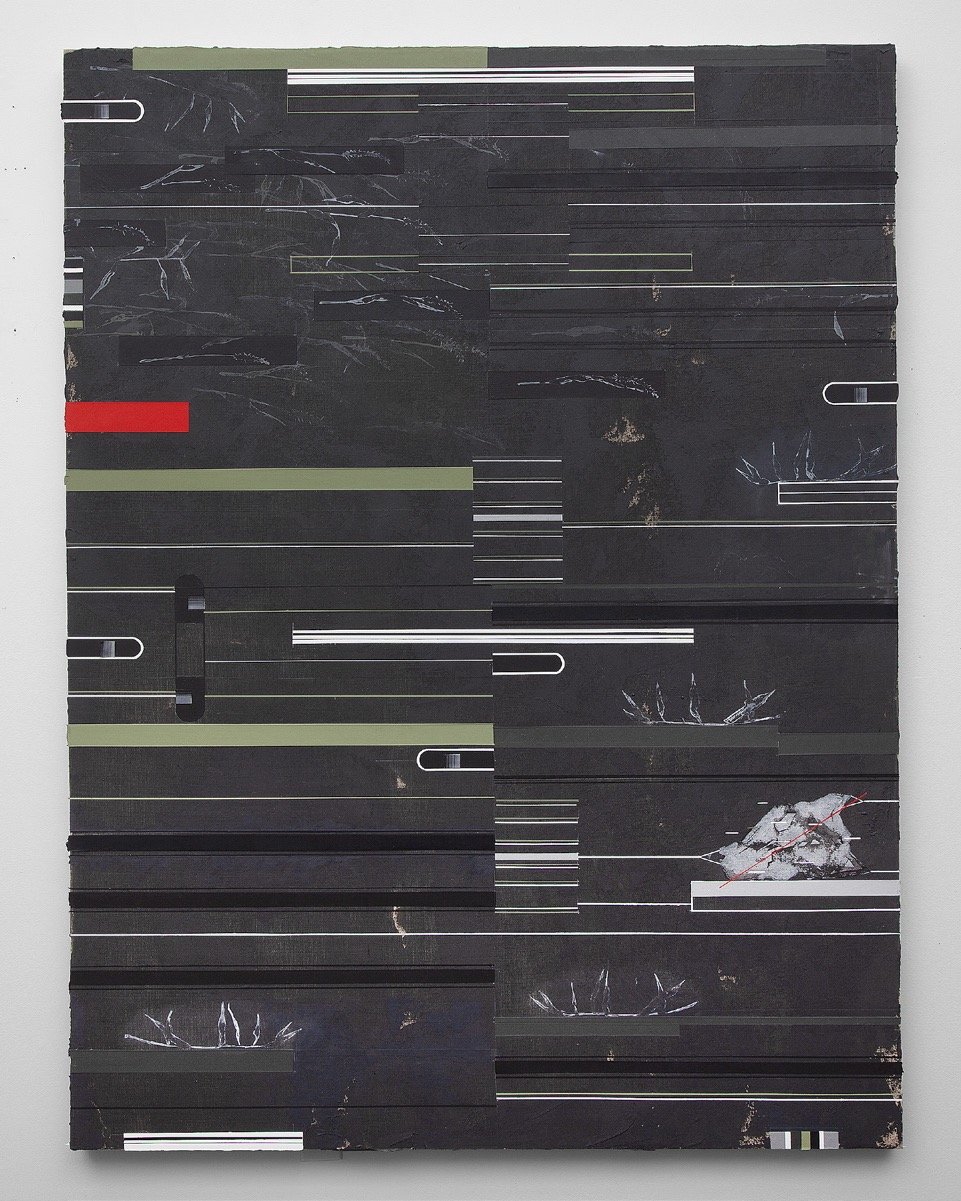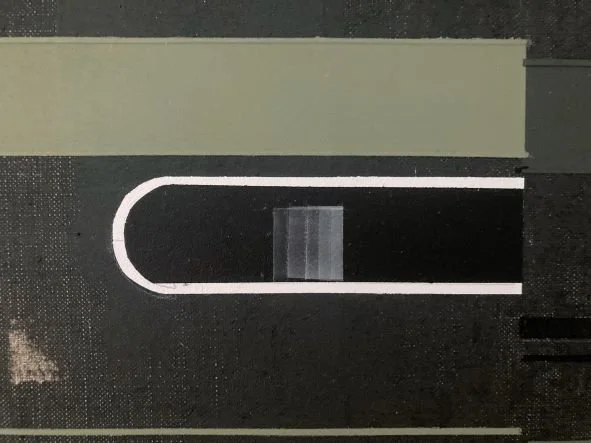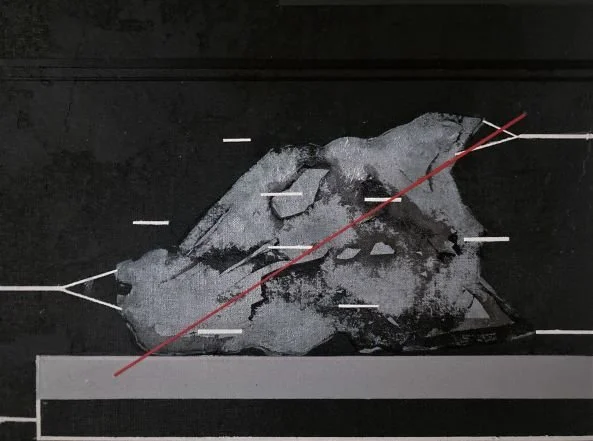Duane SLick (Meskwaki, Born 1961)
Midnight in the Metaphysical Economy, 2021
Acrylic on linen
71 1/2 x 54 in. (181.61 x 137.16 cm)
Formalist on initial reading, Duane Slick’s Midnight in the Metaphysical Economy unfolds into a complex fusion of spare abstraction and delicate renderings of foxtail grasses. Slick executed the figurative elements of the painting in a technique that mimics watercolor but is actually acrylic. The deep black stripes fizz with a muted sparkle (an effect that defies reproduction), while drips of paint extend beyond the edges of the canvas, subtly accentuating the play between the organic and hard-edge qualities of the piece. Linen, typically reserved for oil paints, is an unusual support for an acrylic painting. For Slick, the material and the painting’s translucent ground (that is, the work’s first painted layer) reinforces the ethereal airiness of Midnight in the Metaphysical Economy’s theme and subject.1
References to mortality, to the artist’s tribal background, and to personal experience abound throughout the work. Slick served as his father’s last caretaker as the older man died of lymphoma, and nights were the most difficult periods of caregiving during his home hospice. After his father’s death and the traditional Meskwaki funeral, the artist was left contemplating the ever-present concept of night and, shortly after, began producing black paintings on glass from which this painting evolved. In Midnight in the Metaphysical Economy, Slick's studied choice of color—black, terra vert green, and red—recalls the traditional colors of Meskwaki and Ho-Chunk regalia, grounding the piece in the artist’s tribal affiliation. Six miniscule gradients (fig. 1) appear throughout the work; they refer to a quote by Native elder on eagle feathers. The striking quotation—that in their beauty, the eagle feathers recall “all the sunsets at the same time”—has a profound impact on the artist.2 Slick’s inclusion of this visual theme functions as a pictorial reminder of the brevity of our existence, yet the gradients are contained within oblong forms that are specimen-like and shelved. The startling evocation of the methods of collecting institutions within an otherwise deeply personal work obliquely suggests the treatment of Native American sacred objects by anthropological museums.3 This shelving motif is repeated in the presentation of the grasses and, significantly, of the coyote head (fig. 2) in the lower right corner of the work.4 The artist notes that, to create the animal’s head in this painting, he referred to shadows cast by a mask which, regardless of his approach or angle, always resemble a skull. A red line runs diagonally through the creature’s visage—a gesture of cancellation—and white lines anchor to its ears and snout, as if to render it immobile. The image draws yet further attention to the disconnect between Native people’s lived experience and the presentation of their cultures by museums. Midnight in the Metaphysical Economy is, on one hand, a poetic mediation on grief and the anguish of losing a loved one, yet the painting’s themes surpass the confines of the personal. A self-contained world that is as inviting as it is ominous, the work ruminates on the fraught entaglements of individual, spiritual, and institutional realities.
1 Conversation with the artist, July 8, 2022.
2 Ibid.
3 Slick began using the shelving motif after a Andrew Mellon Mellon fellowship at the Hafferreffer Museum, Brown University. Ibid.
4 On the coyote in Slick’s work, see Richard Klein, Duane Slick: The Coyote Makes the Sunset Better, (Ridgefield, CT: The Aldrich Contemporary Art Museum, 2022), 4-15.
Image courtesy the artist and Albert Merola Gallery.


